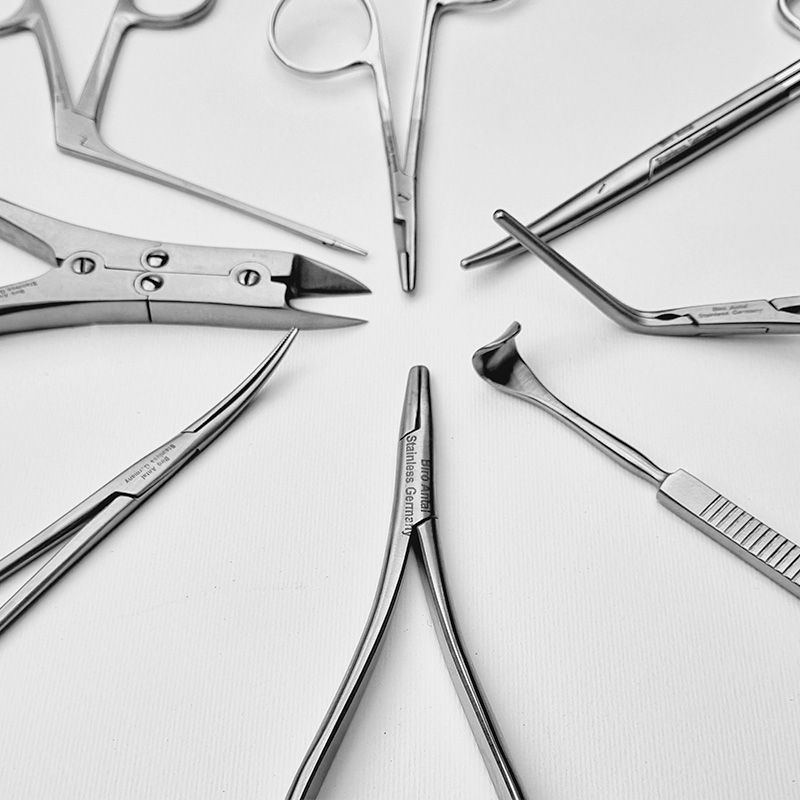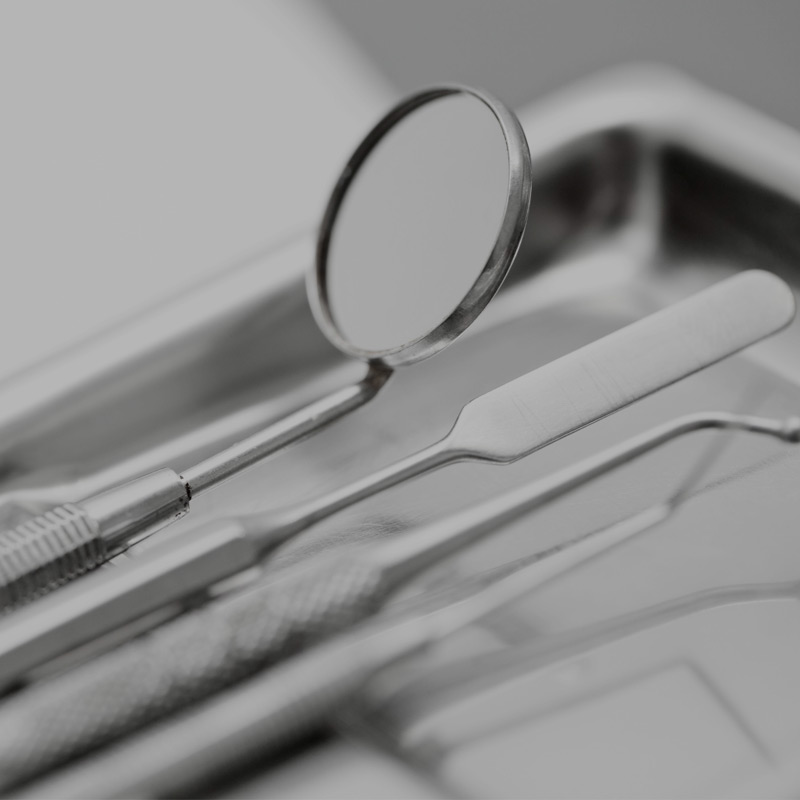1, The recommended maintenance, cleaning andsterilizing of the manual instruments
2, Autoclaving and handling in the case of optical lightning cables andoptical equipments
3, Customer information
The recommendedmaintenance, cleaning and sterilizing of the manual instruments:
1. Before use, the new instruments must be cleaned, dried and sterilized. Since the backlash between the movingparts is small at the new instruments, the instruments must be dried in the airafter cleaning, and the connecting parts and the friction surface of thesprings must be lubricated by some drops of acid-free oil. Before operation itmust be rested for some minutes, so that the oil could leak between thefriction surfaces. The lubrication of the instruments must be performed afterevery cleaning; use only some drops of oil, in the case of spray puton a thin, even layer. We offer for this purpose the oil spray distributed byus.
2. Wash-out: after use, the instruments must be washed out immediately in warm (not hot)running water. The wash-out clears away the blood and the tissues. Extra attention must be paid to follow theinstructions of the use of blood-removing/disinfecting chemicals (decentsolution, given dipping/cleaning time)!
3. Cleaning: if it was not performed immediately after wash-out, the instruments must bedipped in neutral (pH7) watery solvent. Cleaning can be performed in anultrasound cleaning machine, automatic cleaning machine and with a manualmethod. Fine instruments exp.: microsurgical instruments should be cleaned byhand. In this case soft plastic cleaning brush and exclusively neutral (pH7)solvent should be used. Regardless of the washing method, the manualinstruments should always be washed and washed out in an open state. Only thedisinfecting and cleaning solvents should be used that were developed for thispurpose. Do not use metal-made brushes or sanding materials during cleaning. Inthe case of ultrasound cleaning, the instruments should be fixed on the tray.Instruments made of carbon steel and coated by nickel or chrome should not becleaned and sterilized together with the stainless steel instrumentsproduced/marketed by us. During cleaning the producers’ instructions must befollowed.
4. Wash-out,drying: after cleaning, the instruments should be washed outin running water with opening and closing them several times then wash them outin distilled or ion-changed water. Dry the instruments then lubricate themoving parts and check their operation and state. Industrial oils should not beused for lubrication, only the oils produced for lubricating surgical manualinstruments.
Please check the followings:
• The scissors blades should slide smoothly on the whole length, in a closed state they must not be loose
• Check the cut on a thin gauze, it must cut on the three fourths of the blade to its point
• The points of the pincers must cover each other
• There should not be a gap between the jaws of artery forceps and needle holders, they must open and close easily, the connecting part should not be loose
• Check the inner surface fraying of the needle holder’s jaws
• Cutting instruments and knives must have sharp, undamaged blades.
5. Sterilizing: The medical manual instruments produced/marketed by us can be sterilized byeach and every method used in Hungary,following the valid regulations. When sterilizing the set, the instrumentsshould be laid on a special rustproof tray. If we have more than one tray, theheavier should be posed underneath. During autoclaving, the instruments shouldnever be closed. If steam cannot reach the surface of the metal, it will not besterile. During the process, the instructions of the sterilizing producersshould always be followed.
6. Therustproof steel instruments are rustproof only under idealcircumstances. If we handle the modern, corrosion proof steel made instrumentscorrectly, they will last long. The instruments out of use should be stored ina dry place, free from acid and lye-steams. Only an expert can performreparation due to the natural fraying during using the instruments. So as toreach a longer life-span, we should avoid the throwing of the instruments,their knocking to each other, dropping; the instruments should be protectedfrom mechanical, chemical and other damaging effects!
Autoclavingand handling in the case of optical lightning cables and optical equipments
Autoclaving can be performed by one of thefollowing methods:
1. Traditionaldisinfection: wrap the lightning cable/instrument into a surgical cloth, andput it on a clean (open) tray. Perform autoclaving on 121 degree Celsius, under1-bar pressure.
2. Inthe case of rapid autoclave, wrap the lightning cable/instrument into asurgical cloth, and put it on a clean (open) tray. Perform autoclaving forminimum 3 minutes on 132 degree Celsius, under 2-bar pressure.
Becauseof the pressure difference during autoclaving, smaller bubbles may appear inthe silicone tube. The bubbles have no effect on the lightning cable, and woulddissolve after some time.
Cleaning:
The lighting cable/instrument may be stained afteruse, so clean it thoroughly with a fine brush in a warm water/soapy solution soas to remove the probable stain. The cleaning should be performed with anoil-free detergent. Do not use any synthetic materials, since these productsmay be absorbed, and as a consequence they may damage the coating of thelightning cable. After cleaning it should be washed out well in warm but nothot water. After this, a distilled water wash-out and disinfection should beperformed. Extra attention must be paid to follow the instructions of the use of blood-removing, sterilizing, cleaningchemicals (decent solution, given dipping/cleaning time)!
Important!
1. The lightning cable/instrument should not be used with equipments different from the original design or production. Possibly thedirect contact with sharp surfaces or pointed objects and other mechanicaleffects, dropping etc. should be avoid, since the coating may get damaged andso the lightning cable/instrument may become unusable.
2. The lightning cable should be bended only in a big bow, carefully! If the cable is broken, the glass fibre would break, it “gets blind”, so itbecomes unusable!
3. Neverlight directly into the eye with light transmitting equipments, because it maycause sight damage!
4. It is particularly important that—so as to achieve the mostaffective light transmission—the size of the mouth of the light cable batchshould match to the equipment with which we aim to use it.
5. Makesure that autoclaving is being performed with regard ofthe maximum temperature.
The lightening cable/instrument should not be cooledabruptly after autoclaving. Do not dip or wash it out into cold water or anyother fluid, the abrupt temperature change may cause the break of the fibreglass. The extended breaks may cause loss of light transmission.
WARNING!
Do not pose the mouth ofthe light transmitting batch directly to the patient, nor next to flammable materials (exp.: tissue, gauze etc.), since during lighttransmission the light transmitting mouth mediates high temperature!
Fentiek be nem tartása az eszközök rongálódásához, idő előtti elhasználódásához, ún. bevakulásához vezethet
Customer information/User’s manual to medical manual instruments
- Before use remove the wrapping and the blade protectors from the instrument
- The manual instrument can be used more times for an unlimited period; so as to achieve the longest life-span, please perform proper utilization, and maintain, clean, sterilize, use the equipment according to the attached manuals and instructions. Extra attention must be paid to follow the instructions of the use of blood-removing/disinfecting chemicals (decent solution, given dipping/cleaning time)!
- Warranty: 24-48 months, according to the type of the instrument; we repair or change all the manual instruments free of charge if they were used properly, and the problem appears due to production process or raw material; after the time of warranty, we undertake the continuous reparation, maintenance of the instruments
- The rustproof steel instruments are rustproof only under ideal circumstances. If we handle the modern, corrosion proof steel made instruments correctly, they will last long. The instruments out of use should be stored in a dry place, free from acid and lye-steams. Only an expert can perform reparation due to the natural fraying during using the instruments. So as to reach a longer life-span we should avoid the throwing of the instruments, their knocking to each other, dropping; the instruments should be protected from mechanical, chemical and other damaging effects!
- The manual instruments should be used only by properly trained staff, according to the original purpose and the valid regulations at the dedicated place and under proper circumstances
- In the case of an instrument bearing sharp edge or any cutting/piercing surface, attention must be paid that this surface should not contact with any parts of the body, protective garment exp.: gloves or other equipments, because it may cause injury, damage
- With the equipment cut/hold/keep/etc. only things of which material exp.: textile, bandage, leather etc. and consistence are in accordance with the purpose of the instrument
- For the sure grip and the proper operation, the instruments with ring by the ring, the ones with handle by the handle, in other cases by the knurled/recessed/etc. part formed on the surface should be hold or used
- With the instruments with locks attention must be paid that during use or cleaning skin or protective garment should not get between the locks, because it may cause injury or damage
- With holding equipments different artery forceps, tampon holders, pincers etc. not any part of the body should be put between the holding parts or jaws, because it may cause injury
- For equipments with electric connection or insulation, the appropriate connection and the soundness of the insulation should be checked in every case. The instruments with insulation should be held only by the insulated part! The inappropriate use may cause injury, burn, shortcut and the damage of the equipment!
- With light transmitting equipments the decent connection should be checked in every case, because the inappropriate usage may cause loss of light, overheating and the damage of the equipment! Never light directly to the eye with light transmitting equipment!
- The other instructions are available in the documents attached during shipment.




Ask for our price offer!
Choose the products you want from our catalog and send them to us with a few clicks.
Contact
Phone
Bíró Csaba +36 30 436 8624
Bíró Tibor +36 30 299 4678
biroorvmusz@t-online.hu
Adress
H-4031 Debrecen, Bartók Béla u. 66.
© 2021 All rights reserved!
Bíró Antal medical instruments specialist
PULRIVACY STATEMENT